

Comuna 13 in Medellín, Colombia was once one of the world’s most dangerous neighborhoods. Today, it has transformed into an urban hub with a thriving art scene. It tourists with its colorful street art and performances of hip hop music and breakdancing. Comuna 13 also showcases Medellín’s innovative public transportation; impressive escalators and a metro line integrate this hilltop community with the bustling city below.
In this travel guide to Comuna 13, I’ll cover trip planning information and summarize my experience taking a Comuna 13 walking tour. This neighborhood in Medellín has a rich cultural heritage and historical significance, and in this post I’ll do my best to convey this!
For more Colombia travel tips and destination guides, head to my Colombia page.
Comuna 13 History
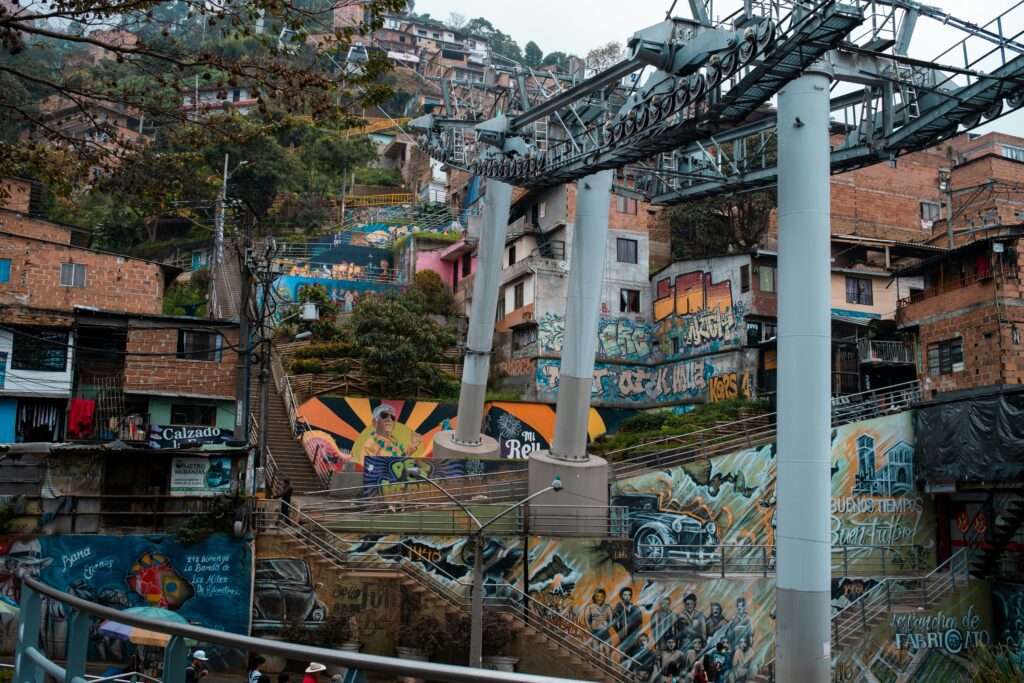

Comuna 13 was originally inhabited by farmers who were displaced by violence in rural areas. They built houses from basic materials and the neighborhood lacked running water and electricity.
Unfortunately, the residents didn’t find the peace they were seeking. Comuna 13’s location in the hills of Medellín and its difficult access made it the ideal place for drug trafficking in the 1980s. Urban war crippled the neighborhood, and residents were vulnerable to recruitment into criminal activity because they lacked job opportunities and had few skills aside from farming and construction.
Following the collapse of drug cartels after Pablo Escobar’s death in 1993, Comuna 13 still grappled with conflicts between paramilitaries, guerrilla groups, and local gangs. In 2002 the Colombian government took control over the area with a violent military intervention. Since then the state has provided support to the area, most notably with the construction of escalators and gondolas linking the neighborhood to the subway. These developments have opened up additional employment opportunities for residents.
My Visit to Comuna 13


I took the Medellín metro to Comuna 13, where I joined a walking tour in Spanish and realized I was the only foreigner. I met a friendly group of Colombians who were from a nearby city and visiting Medellín for the flower festival. They gave me great recommendations for Salento, my next destination. Oddly enough they also enthusiastically recommended that I travel to Brazil despite never having ventured there themselves.
Looking back on my visit, the phrase “sensory overload” comes to mind. The Comuna 13 art is visually stunning, but the sheer volume of people jostling for the perfect photo opportunity made capturing a proper picture challenging. During the tour, we explored art galleries and contributed our own Comuna 13 graffiti to the vibrant streetscape. We were also given frozen mango treats with lime and salt, which provided some respite from the sweltering heat.
Although my visit wasn’t timed ideally (a weekend during a local festival), I’m still glad I got to experience this historically significant neighborhood of Medellín.
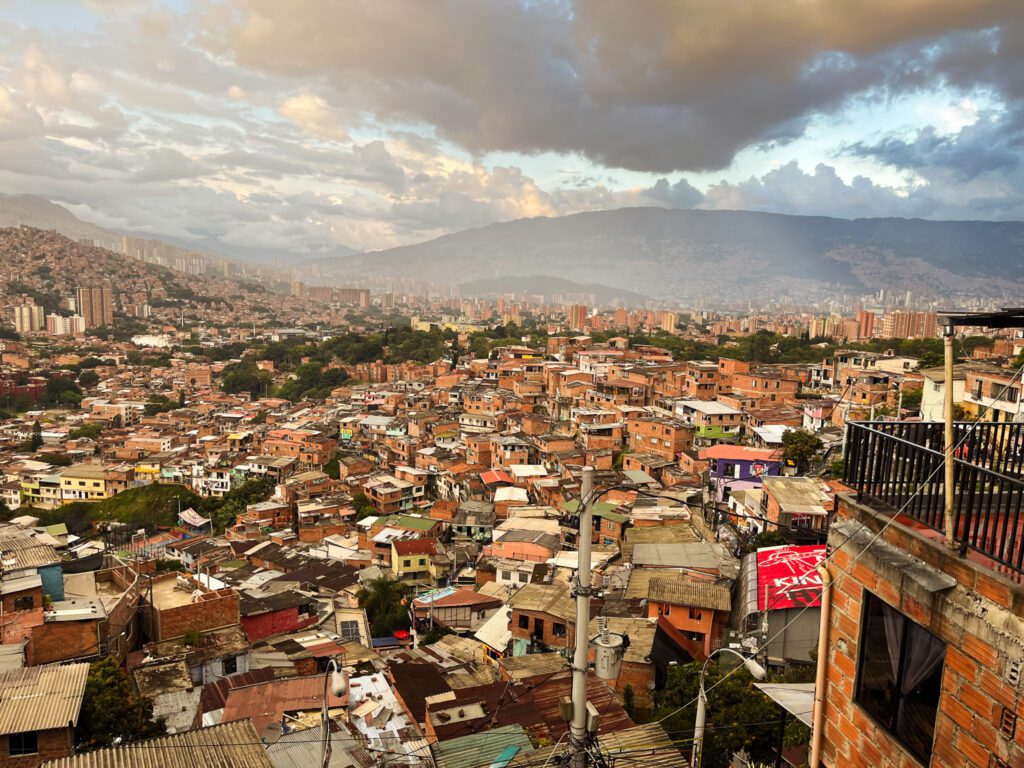

Comuna 13 Trip Planning Information
Comuna 13 Tours
While it’s possible to visit independently, I recommend joining a Comuna 13 walking tour. Your guide will explain the neighborhood’s rich heritage. In addition, a guide will help you discover unique Comuna 13 art, navigate the maze-like streets, and understand the significance of the murals.
There are a variety of things to do in Comuna 13, most of which are free. Some of the main attractions include:
- Art galleries
- Graffiti and murals (your guide will lead you to the best ones)
- The electric escalator
- Live music and dance performances
- Shopping (support local artists!)
- Cool off with popsicles and ice cream
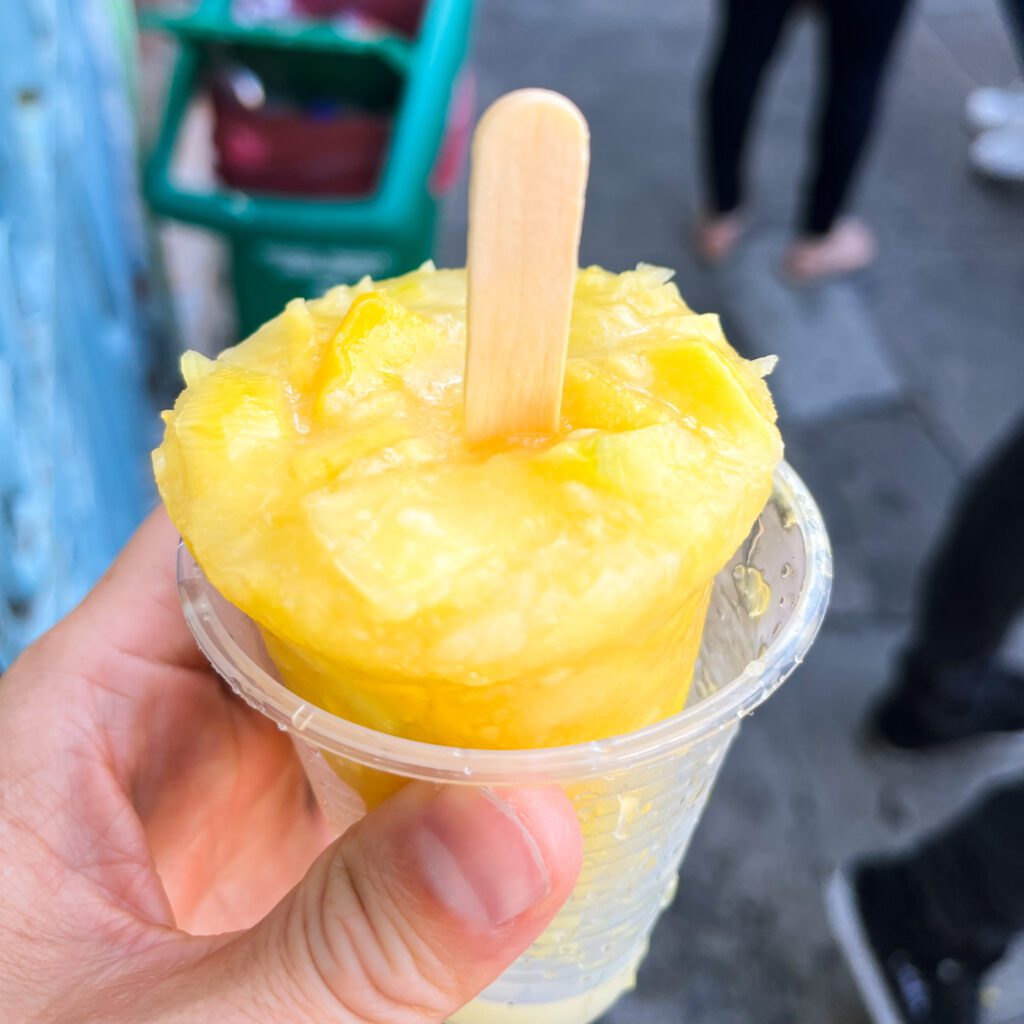

How Long to Stay
A few hours is enough time to explore all of the major attractions.
When to Visit Comuna 13
It’s best to visit in the morning, before crowds and sweltering temperatures arrive. There isn’t much shade and it gets very hot.
Also, avoid making the mistake I did and don’t visit Comuna 13 on local holidays. The neighborhood is small and easily gets overcrowded with visitors.
Where to Stay
Check out my Medellín guide for recommendations on places to stay in Medellín.
Where to Eat in Comuna 13
There are plenty of dining opportunities including street food, cafes, bars, and restaurants. Cold drinks, popsicles, and ice cream are popular amongst visitors, as it gets hot!


Is Comuna 13 Safe?
Comuna 13 is a highly touristic area and is safe to visit during the day. Avoid walking alone at night. Check out my Colombia safety guide for more tips, and make sure you have travel insurance.
Budget and Money
There are no ATMs in Comuna 13. Bring cash for the metro and for any food and souvenirs you may want to purchase, as well as a tip for your tour guide. Entrance to the neighborhood is free.
What to Bring to Comuna 13
For a full list of what to bring, refer to my Colombia packing list. I would stress the following:
- Download maps of Medellín (use Google Maps or MapsME)
- SIM or eSIM card
- Hat
- Sunscreen
- Good walking shoes. You’ll be walking up and down a lot of stairs.
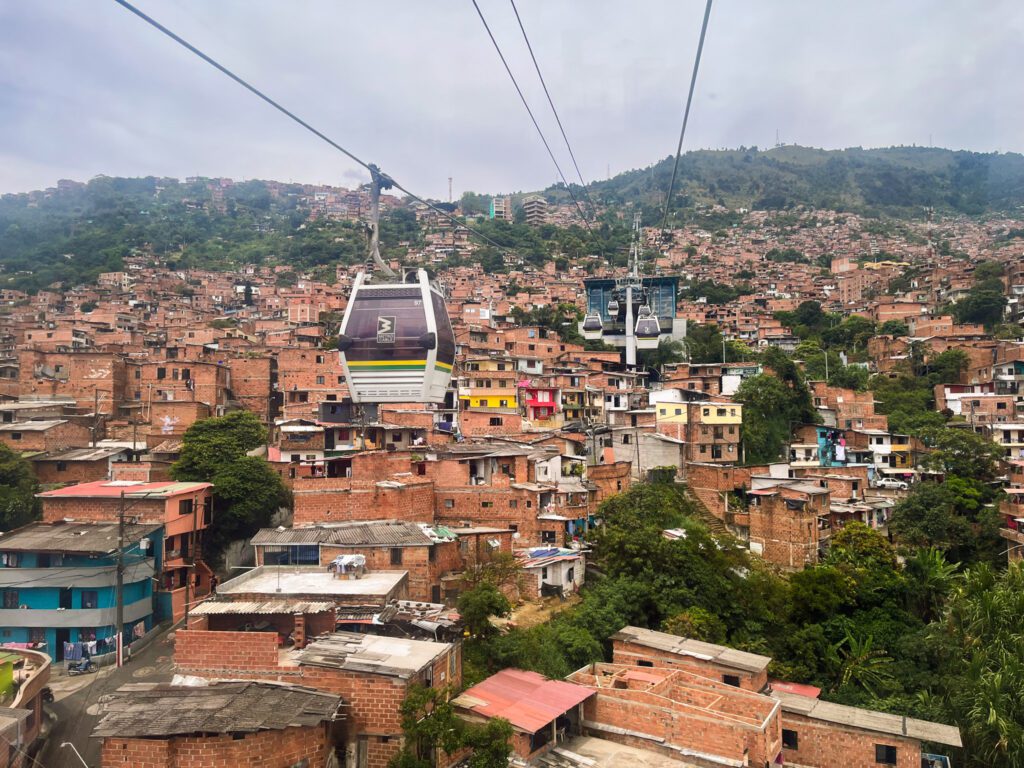

How to Get to Comuna 13 in Medellín
First, take Metro line A to San Antonio station (tickets are 3,280 COP). Then, change to Metro line B and take it to San Javier station.
If you’re with a tour, you’ll meet your guide at San Javier station and they’ll arrange the rest of the transportation for you. If you’re visiting Comuna 13 independently, from San Javier you can walk 20-30 min uphill to the Comuna 13 escalators (“escaleras electricas”). I have done this as a solo female and it is perfectly safe during the day. If you don’t want to walk, take bus 225i or 221i from just outside the metro station.
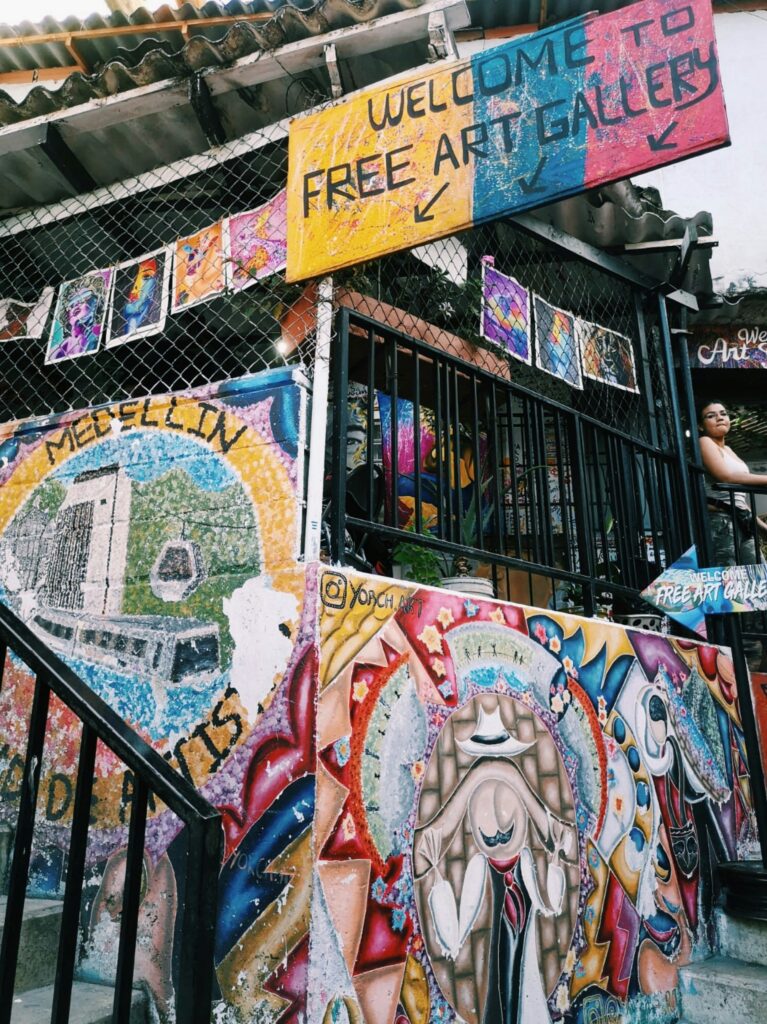

How to Get Around
You can walk within the neighborhood’s center, which is small and not accessible by car. After walking up and down the hills, you’ll understand why the installation of the Comuna 13 escalators was such a big deal!
Visiting with a guide will help you navigate the neighborhood, which can feel like a labyrinth with all of its alleys.
Where to Go Next
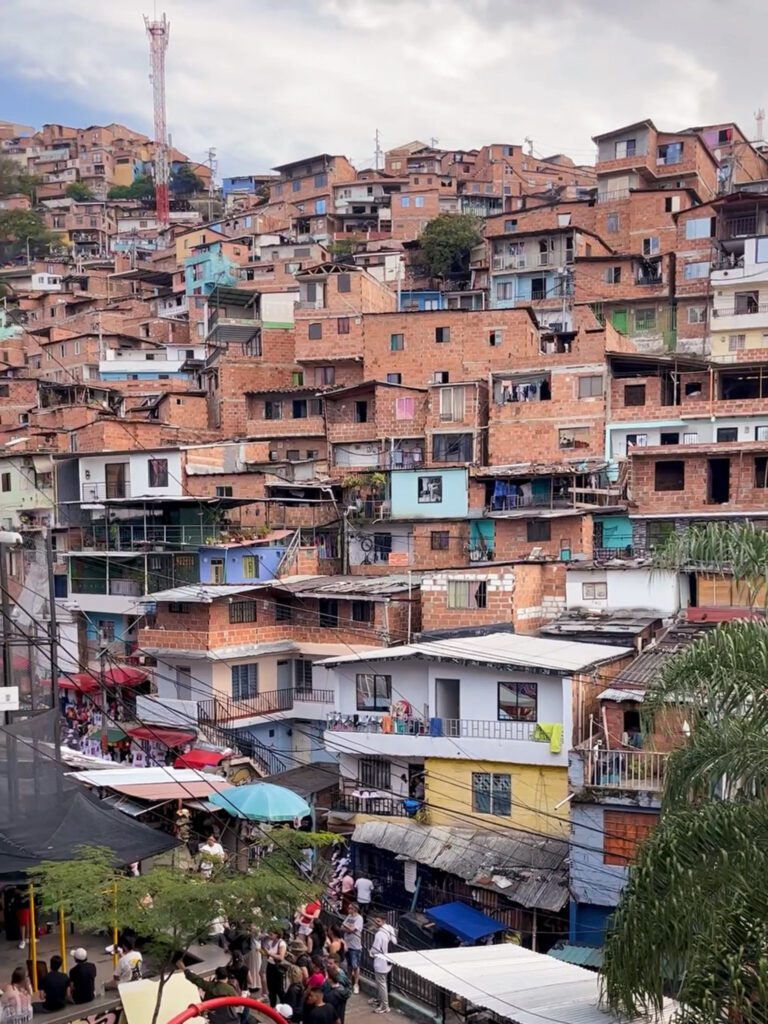

Thanks for reading! I hope this Comuna 13 travel guide helps you plan your day trip from Medellín. Thoughts? Questions? Let me know in the comments.
For more Colombia travel tips and destination guides, head to my Colombia page.
Confirm all logistical and safety information before your trip. Also If you buy through links on this site, I may earn an affiliate commission. Thanks for supporting me in creating free content for you to enjoy!
Save this post for later and share on Pinterest!
TRAVEL RESOURCES
Head to my Travel Resources Page for more recommendations.
Packing list. See my recommendations for packing a carry-on for long-term or multi-season travel.
Booking.com. This is my go-to platform for booking accommodation since it consistently gives me competitive prices and additional discounts based on usage.
SafetyWing. The most affordable travel insurance I’ve found that also offers excellent coverage.
Viator and Get Your Guide. Offer extensive tour options for both day trips and multi-day excursions.
BusBud. A great platform to search for bus routes in more than 80 countries and buy tickets online.
LifeStraw. This easy-to-use water filter guarantees that you always have access to clean drinking water.
Travel Credit Card. Earn substantial points for travel-related expenses and a very generous bonus when opening an account.
Comments
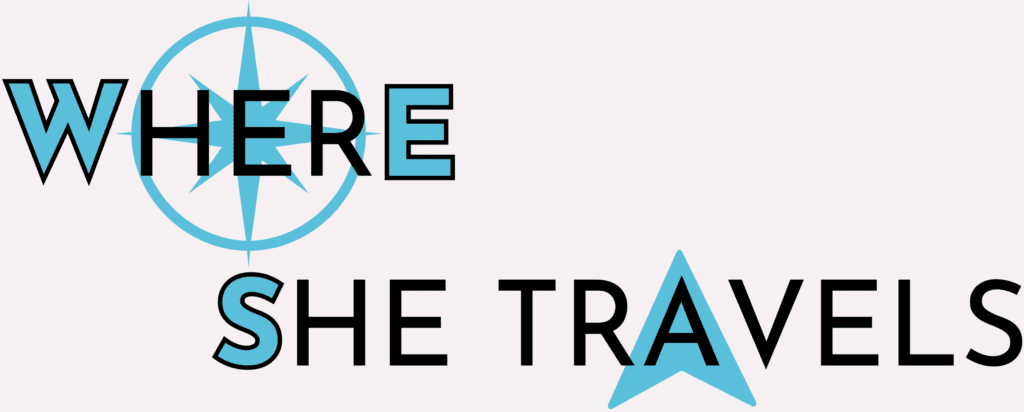



Hi, I’m Kristina! I’m a solo female traveler sharing my personal experiences around the world. Authentic travel is important to me; in my destination guides I emphasize not just the most spectacular sights but also the local stories and history.
Other things I’m passionate about are discovering hidden gems, budget-friendly travel, and hiking and backpacking. My goal is to show you how to seek adventurous experiences for yourself!






Leave a Comment